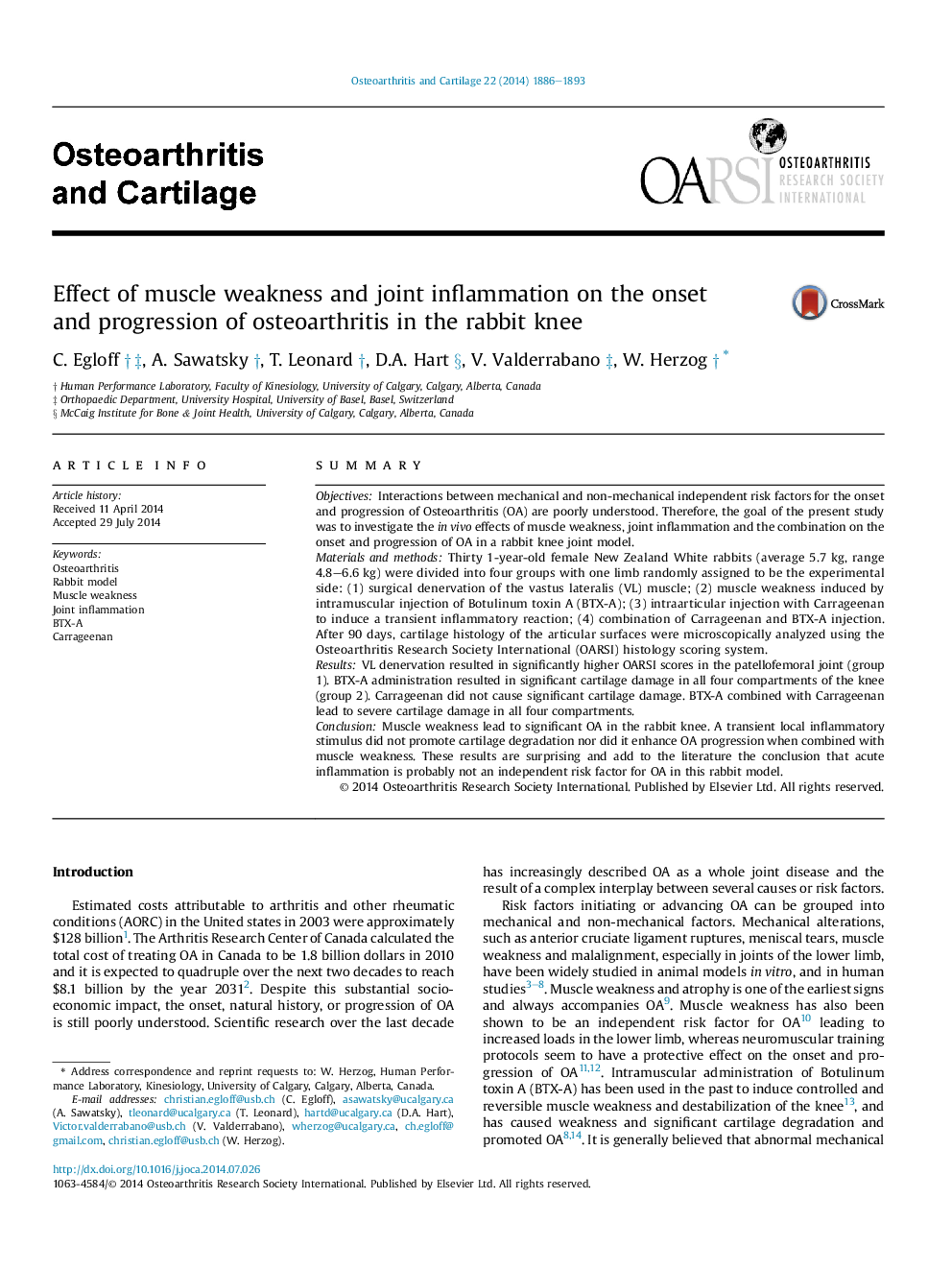| Article ID | Journal | Published Year | Pages | File Type |
|---|---|---|---|---|
| 3379429 | Osteoarthritis and Cartilage | 2014 | 8 Pages |
SummaryObjectivesInteractions between mechanical and non-mechanical independent risk factors for the onset and progression of Osteoarthritis (OA) are poorly understood. Therefore, the goal of the present study was to investigate the in vivo effects of muscle weakness, joint inflammation and the combination on the onset and progression of OA in a rabbit knee joint model.Materials and methodsThirty 1-year-old female New Zealand White rabbits (average 5.7 kg, range 4.8–6.6 kg) were divided into four groups with one limb randomly assigned to be the experimental side: (1) surgical denervation of the vastus lateralis (VL) muscle; (2) muscle weakness induced by intramuscular injection of Botulinum toxin A (BTX-A); (3) intraarticular injection with Carrageenan to induce a transient inflammatory reaction; (4) combination of Carrageenan and BTX-A injection. After 90 days, cartilage histology of the articular surfaces were microscopically analyzed using the Osteoarthritis Research Society International (OARSI) histology scoring system.ResultsVL denervation resulted in significantly higher OARSI scores in the patellofemoral joint (group 1). BTX-A administration resulted in significant cartilage damage in all four compartments of the knee (group 2). Carrageenan did not cause significant cartilage damage. BTX-A combined with Carrageenan lead to severe cartilage damage in all four compartments.ConclusionMuscle weakness lead to significant OA in the rabbit knee. A transient local inflammatory stimulus did not promote cartilage degradation nor did it enhance OA progression when combined with muscle weakness. These results are surprising and add to the literature the conclusion that acute inflammation is probably not an independent risk factor for OA in this rabbit model.
